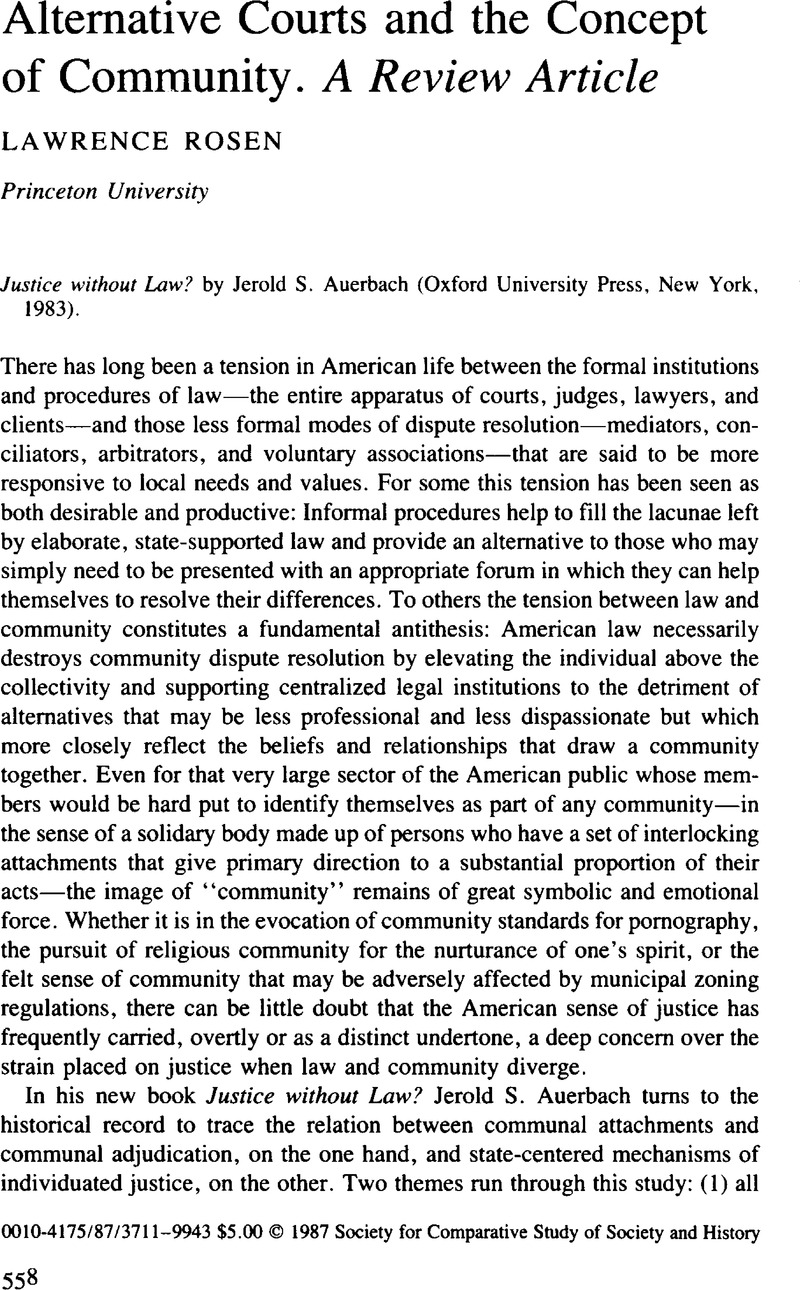No CrossRef data available.
Published online by Cambridge University Press: 03 June 2009

1 406 U.S. 205 (1972).
2 Galanter, Marc, “Reading the Landscape of Disputes: What We Know and Don’t Know (and Think We Know) about Our Allegedly Contentious and Litigious Society,” 31 U.C.L.A. L. Rev. 3 (1983)Google Scholar. Indeed, in the colonial period, where Auerbach finds considerable use of community dispute resolution, Galanter, citing the studies of historians, states: “In Accomack County, Virginia, in 1639, the litigation rate of 240 per thousand was more than four times that in any contemporary American county for which we have data. In a seven year period, 20% of the adult population appeared in court five or more times as parties or witnesses. In Salem County, Massachusetts, about 11% of the adult men were involved in court conflicts during the year 1683” (p. 41, footnotes omitted).